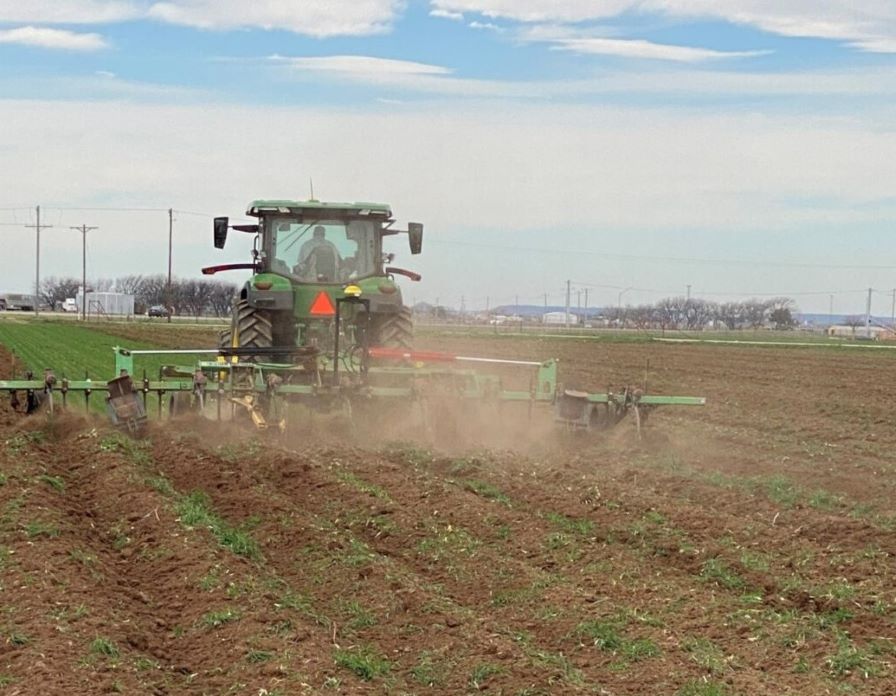Six Texas-Sized Tips for Success in 2019
Texas growers will always remember 2017 for Hurricane Harvey and other weather extremes that took a bit of the shine and promise out of the state’s cotton crop.
Then along came 2018, which – in classic “hold my beer” fashion – showed Texas cotton growers what extremes really looked like. In all, every cotton producing area of the state had to deal with extreme growing and/or harvesting conditions last season – some to the point where the 2018 season lingers on into early 2019, with cotton still standing in some fields and traditional fall field work still needing completion.
“It seems to be a repeating situation for Texas,” laments Dr. Gaylon Morgan, state Extension cotton specialist with Texas A&M AgriLife Extension.
“In West Texas, it was so dry early that most of the dryland crop in that area just didn’t amount to much,” he reports. “And it was nearly the other extreme in South Texas, where too much moisture and cold weather caused seedling diseases and other things that growers hadn’t dealt with in a while. The Blacklands were extremely dry most of the season, and growers tried to get what little cotton was made out between rain showers. And the Coastal Bend and Upper Gulf Coast got 10-plus inches of rain in late June, which was too late to help most of that crop and caused some premature defoliation.
“Things were extremely dry early in the Rolling Plains, and a lot of their irrigated crop didn’t hold up well because of limited pumping and well capacity,” adds Morgan. “September rains made harvest difficult, too. The only bright spot may have been the Northern High Plains, which caught a few more rains and had some good irrigated and dryland crops.”
A bit more field work is going to be needed in several areas, including the Upper Gulf Coast, Brazos Bottoms and Blacklands, where some deep ruts left from harvesting will need to be repaired.
“It was a challenging year,” he says. “Lots of people are glad 2018 is over.”
Some Positives in Place
Moving ahead, there are several positives already in place that should help growers as they prepare for 2019 planting.
For starters, fields throughout Texas have a full profile of moisture to work with at planting. “That puts a lot of people – especially dryland growers – in a good spot for a successful crop,” says Morgan. “A full moisture profile is priceless.”
Likewise, an early freeze killed a lot of cotton stalks remaining in the fields before growers had a chance to get in and cut them – a very important event for the continued success of the Boll Weevil Eradication Program in the Coastal Bend.
And, despite the challenges of the past three growing seasons, Morgan says that cotton acres will likely be up slightly across the state in 2019.
“We won’t see the acreage jumps we’ve seen in the past few years,” he states. “Our worst case scenario is flat, and our best case scenario is probably a 3-5% increase in acres.” Where will those extra acres come from? Morgan predicts some of the wheat acres in the Blacklands and Rolling Plains could shift to cotton, as well as some corn and sorghum acres in the Upper Gulf Coast and Coastal Bend. The same goes for more corn acres moving to cotton in the Northern High Plains because of well capacity. But he still doesn’t see a big jump coming this year.
“Growers are pretty much maxed out on what they want to rotate – or not rotate – with cotton,” he explains.
Tips for 2019 Planting
With a full profile of moisture and an abundance of good cotton varieties and technologies targeted to each growing region of Texas, what does a grower need to do to get ready for 2019? Morgan has some suggestions:
- In areas where cotton is going be planted after cotton, pay attention to pest issues that may occur with no rotation. Have the fields tested for nematodes and soil-borne diseases and select varieties accordingly. Strongly consider putting nematode resistant varieties on fields with a history of nematodes.
- Talk to your neighbors to find out which weed control technology they’re planning to use in order to minimize off-target movement – and challenges between neighbors. Communicate before purchasing seed so everyone can be on the same page and place similar technologies adjacent to one another.
- Pay attention to what’s in the sprayer. A lot of observed damage in fields last year came from the “self-inflicted wound” of tank contamination. Know which technology – XtendFlex, Enlist, Roundup Ready, LibertyLink or none – is in each field and treat accordingly. And, be sure to completely flush and clean sprayers after each use, according to herbicide label directions.
- Sample fields and fertilize accordingly. Know where you stand with soil nutrient levels before planters roll. In many cases, fields may be low in potassium or phosphorus. Soil sampling is the best way to help growers know early how to prioritize their nutrient budget.
- Variety selection is still key. Look at the variety options as a whole for your fields based on maturity, the traits that come with each variety, yield testing results and fiber quality package. When possible, look at multiple locations and multiple years of yield results to determine yield stability.
- Get back to basics. Our cotton growers know how to grow cotton. But, sometimes, everyone needs reminders to help avoid problems – and the time and expenses needed to fix them.
“A bad year may be hard to forget, says Morgan. “But growers are still optimistic about cotton.”









